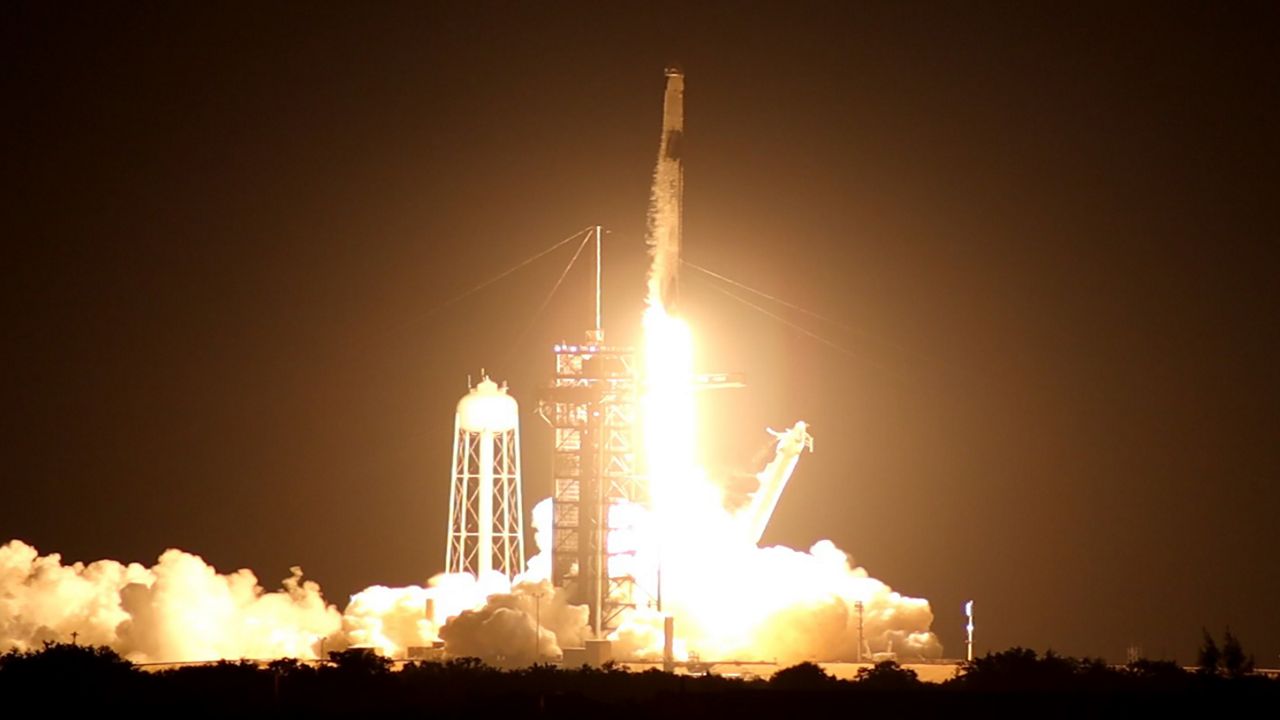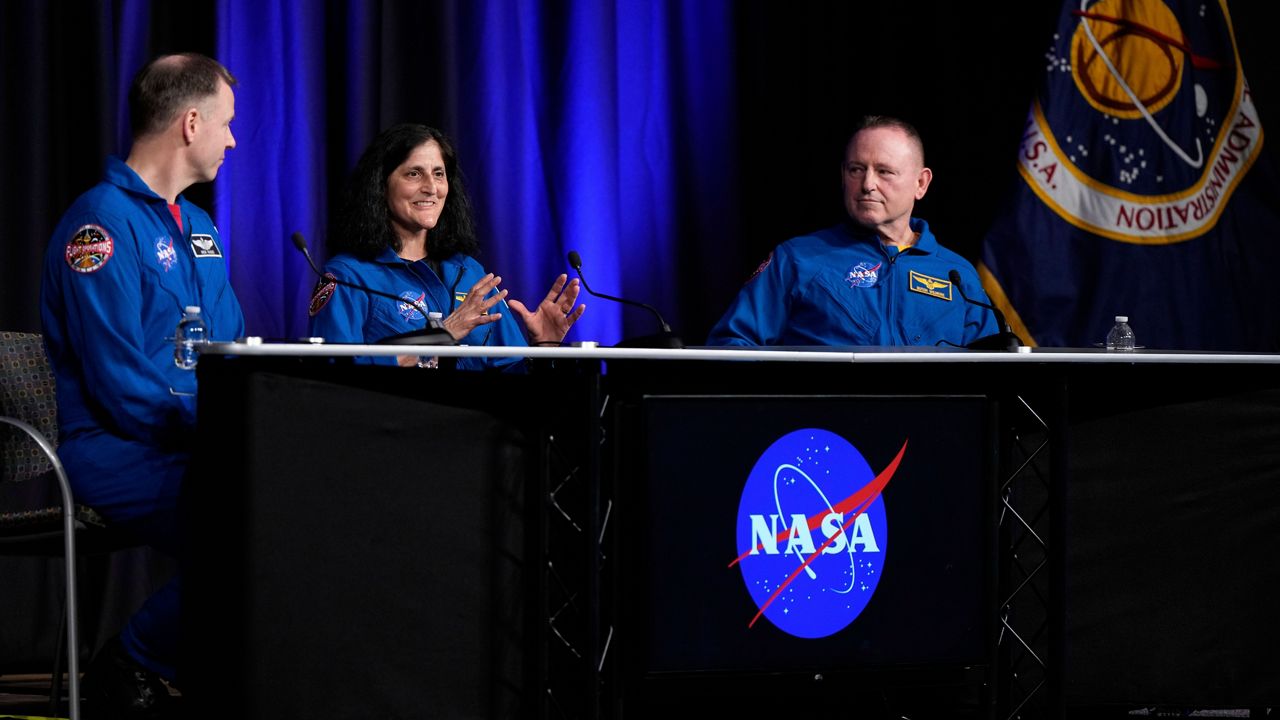KENNEDY SPACE CENTER, Fla. — Throughout the fabric of space exploration chartered by the National Aeronautics and Space Administration (NASA), African Americans have and continue to help push America’s space agency towards new horizons of exploration and discovery, while at times surmounting their own struggles against adversity.
What You Need To Know
- Black employees have been a part of NASA’s history since the very beginning
- NASA’s main facility in Washington D.C. was renamed the Mary W. Jackson NASA Headquarters building in honor of the first Black female engineer at NASA
- A space-based observatory launching in 2025 was recently renamed the Carruthers Geocorona Observatory in honor of Dr. George Carruthers, the Black designer and builder of a gold-plated telescope launched to the moon on the Apollo 16 mission in 1972
Bill Gary, a 40-year veteran of NASA, said he loved and cherished his time spanning from the post-Apollo through the Space Shuttle era, but said that time was not without its challenges. Through his experience as an electrical engineering major at Tennessee State University, Gary made his way to Florida’s Space Coast.
He arrived at a time when housing in Titusville was still very much segregated. He told Spectrum News that the home he lives in today is an area of town barred to Black residents at the time.
Gary became a facilities engineer at NASA’s Kennedy Space Center and said he was one of just a small number at the time in the mid-70s.
“We had a couple of people in mechanical engineering, we had maybe about three or four in the facilities engineering – electrical,” Gary said. “I was in control systems. There was another guy, he was in the AC power systems.”
He also recollected that there seemed to be an upper limit of how far one could go in their career if they were Black at that time.
“We were all doing our jobs, but of course as the years go on, you get promoted and then you reach this level that promotions don’t come any more,” Gary said. “There was no Black supervisors in the whole engineering directorate and it had about 325 people in there.”
Gary said things “came to a head” in 1992 after he returned from a stint working for NASA in Washington D.C. when he was passed over for a promotion. He went and spoke with the deputy center director, who was James “Gene” Thomas at the time, and spoke about the conditions for Black workers in the engineering directorate.
He said Thomas helped bring about some changes, which Gary said led to the promotion of the first Black supervisor in 1994. According to his NASA bio, Thomas was awarded the NASA Equal Employment Opportunity Medal that same year.
“And I had come in there in ’74, so in 20 years, it took about 20 years before we got the first Black engineering supervisor,” Gary said. “Since that time, there’s been growth, there’s been people that have been elevated to some of the highest levels there, but I still, I think, African-Americans lag overall in the promotions and opportunities and so forth there.”
Diversity progresses
Since Gary’s retirement from NASA 2008, and prior to it, the agency has taken a number of initiatives towards increasing its diversity at KSC and across its other centers.
According to NASA’s most recent Model Equal Employment Opportunity Program Status Report studying FY 2021, “LinkedIn selected NASA as the top 2021 diversity champion among U.S. employers with between 10,000 and 30,000 employees.”
Its report stated that NASA also developed a tool called the Reasonable Accommodation Management System (RAMS), which is designed to “enable the Agency to better track and monitor trends in processing of reasonable accommodation requests.”
NASA notes in its report that, as Gary noted during his time, there is still a disparity between the workforce population and representation in leadership, specifically what NASA describes as “Senior Level (SL) and Senior Scientific and Professional (ST) employees.”
“Blacks make up 10.9 percent of the NASA workforce, yet are only 2.3 percent of those in ST positions and 1.1 percent of those in SL positions,” the report stated.
It went on to describe similar disparities in those positions for both Hispanic employees, Asian American and Pacific Islander (AAPI) employees and female employees.
In its efforts to increase diversity, the agency is helping those, like Jarel Lawrence, rise to great heights in his NASA career. His foray into the space industry began as an intern about 14 years ago after graduating from Bethune-Cookman University with a Bachelor of Science in Computer Science.
He worked his way from being a telemetry systems engineer in 2009 to now working as the mission architecture operations lead in support of NASA’s Commercial Crew Program (CCP). He said during that time, his NASA coworkers have always felt like family.
“Everyone got recognized for all their hard work and value,” Lawrence said. “And that was one of the big things about Commercial Crew and human spaceflight, in this particular program, everyone is valued and no one is taken for granted.”
Lawrence said being at NASA in the midst of preparing for the Boeing Crew Flight Test and the SpaceX Crew-6 mission is an incredibly exciting time. He said he also recognizes that being able to be in his current position is due to the legacy of many Black employees who came before him and helped push for more opportunities.
Lawrence said he got some good advice from leaders in his own life and now wants to help be a good example of potential for young people who may also be looking at NASA careers one day.
“They said, ‘Represent,’ which means just go about representing yourself. Represent what you stand for. Represent that other people can do it,” Lawrence said. “And that’s something I try to aspire to in order to inspire people behind me as well as formally mentoring those and saying, ‘Hey, don’t doubt yourself. You’re here for a reason.’”









